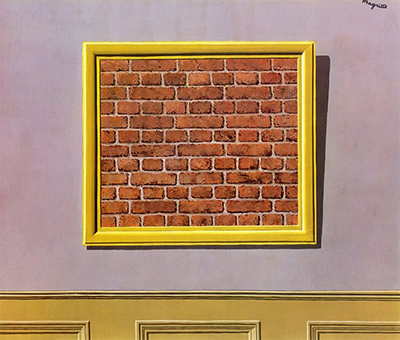The Empty Picture Frame is a 1934 work of art by the Belgian Surrealist painter Rene Magritte. Magritte was one of the foremost Surrealists of his time, and he remains a key figure in Surrealism in the present day. The painting also has an alternative title, which is 'Landscape'.
The Empty Picture Frame is an oil on canvas work, and this medium is typical of Magritte. Many of his other iconic works are painted in oils, including The Son of Man (which, famously, depicts a human figure in a suit and bowler hat with an apple in front of their face) and The Human Condition. As its name suggests, The Empty Picture Frame depicts a picture frame which, instead of a painting, contains a brick wall.
The picture frame is depicted hanging on an otherwise bare painted wall in what may be a gallery or what may be a house. It is clear why this painting has the alternative title of 'Landscape', as it prevents a wider view of the 'landscape' beyond the picture frame, even though this landscape is a somewhat bare and uninspiring one.
Magritte was a painter who was very interested in perspective. One of his most famous, later, works is even called Perspectives on a Horizon. In The Empty Picture Frame, we see this artist perhaps playing with perspective like never before. This painting shows us a painting within a painting, a frame within a frame, a wall within a wall and a gallery or house within a gallery or house.
The Empty Picture Frame also raises questions of layering. Is the brick wall depicted within the eponymous picture frame a revelation of the bricks behind the painted or papered wall on which the frame is hung? Or, are these bricks actually supposed to have been painted on to a canvas contained within the frame? Perhaps this question is something that Magritte wanted his viewers to decide.




